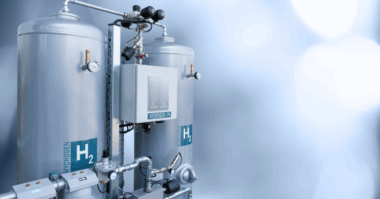Often, when I&E technicians specify replacement switches, they may feel more comfortable replacing “like-with-like” and choose another mechanical switch.
Users may be accustomed to the electromechanical switch’s maintenance and may not be familiar with the hidden maintenance costs versus those of the electronic switch serving the same function.
Electromechanical switches are built from an array of moving parts including mechanical switch contacts, adjustment screws, plungers, springs, and more, leaving little room for error before a switch failure. Many ways a switch can fail include, but are not limited to: sticking parts due to media buildup; shifting set point adjustments from vibration or temperature changes; or contact corrosion over time. Regular maintenance is required to detect these issues.
These maintenance hours can be costly, and multiplied by the quantity of mechanical switches present at a site, add up quickly. If a permanent failure occurs, such as corroded contacts, then the replacement of the mechanical switch will include costly downtime in addition to the maintenance hours.
Electronic switches on the other hand, do not contain any moving parts that wear over time, and since all set point adjustments are programmed electronically, calibration is less affected from vibration and temperature changes. Also, contact corrosion is no longer a concern because there are no physical contacts in electronic switches which use a solid-state relay. And with smart, electronic switches, if faults do occur, the display will show an error code explaining which error had been detected. This identifies the specific device with the problem, and identifies what the I&E technician needs to fix to reverse the fault and get the switch operational.
United Electric Controls’ ONE Series smart, electronic switch can help keep maintenance and costs to a minimum.
Pressure spikes can often cause erroneous setpoint trips. These unwanted trips interrupt the process and might even trigger maintenance requests. Typically, the user would install a mechanical dampener in line with their electromechanical switch, to prevent these false trips. Now, an I&E technician needs to maintain two mechanical products.
One of the features of the ONE Series smart, electronic switch is the Filter mode that will electronically dampen pressure spikes to prevent any erroneous trips. This is now achieved with one device and saving the maintenance on two mechanical devices.
There are other maintenance-friendly features included, such as Plugged Port mode and Window mode. You can learn more about those here.
In conclusion, there are many ways upgrading to the ONE Series could help cut unnecessary, hidden maintenance costs when using electromechanical switches, and in addition, increasing reliability and performance efficiencies. Contact one of UE Controls’ sales application engineers to discuss your upgrade. +1 (617) 923-6977.
 About the Author: Mark McCabe, Sales Applications Engineer
About the Author: Mark McCabe, Sales Applications Engineer
Mark McCabe has been with UE for just over 2 years. He is the Sales Applications Engineer focusing mainly on the One Series Smart Electronic Switch and Transmitter.
Email: mccabe@ueonline.com




